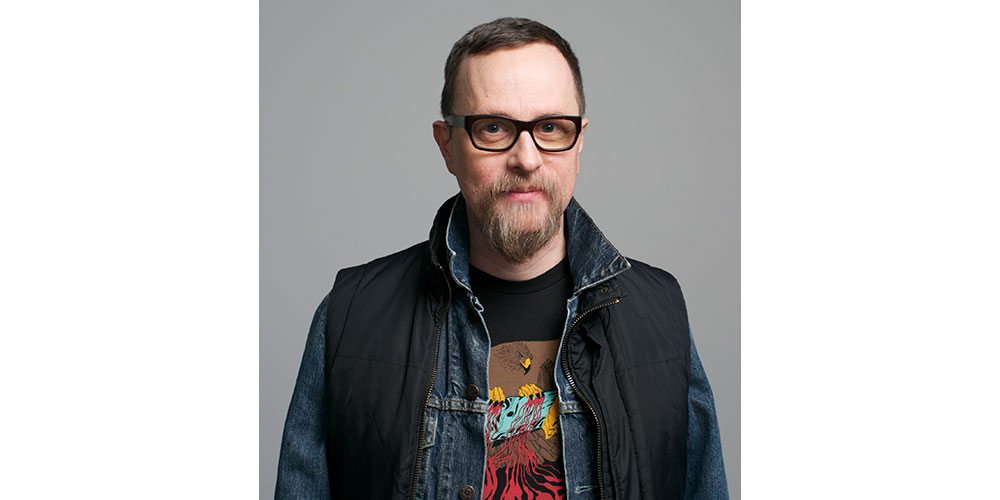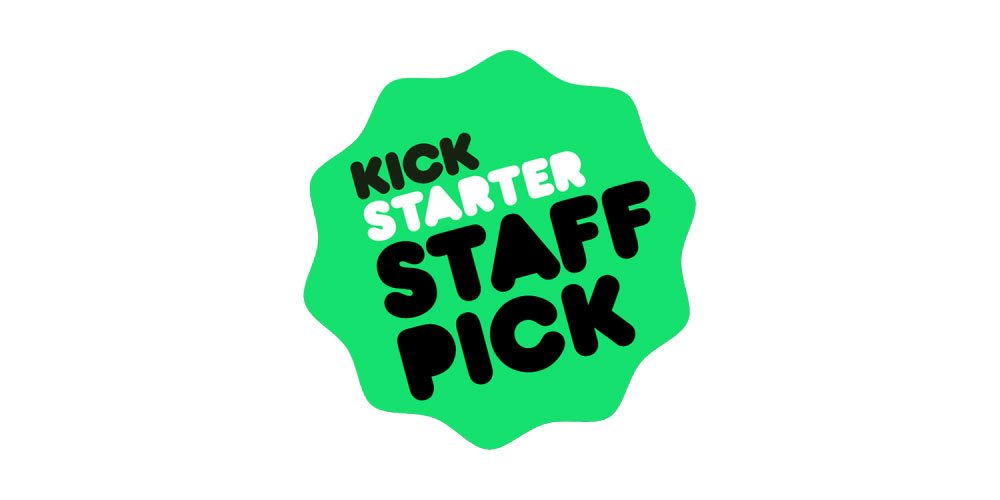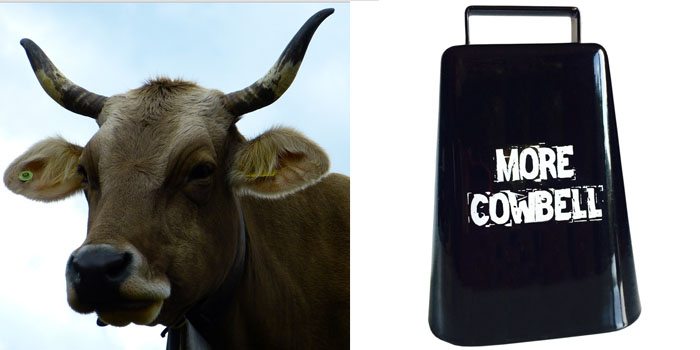
In seven short years, Kickstarter has changed how we view investment and development. The company, which brings together creators and consumers, yanked the term “crowdfunding” from of the back of financial textbooks and put it at the forefront of our consciousness. For the entrepreneurial garage tinkerers and basement hackers, the dream of turning ideas into marketable products became a simpler process and a real possibility.
Nowhere has Kickstarter’s effect resonated like games, both electronic and cardboard, where about 8,800 successfully funded projects have raised more than half a billion dollars, making it the biggest category at Kickstarter, in terms of dollars. At GeekDad, we’re a little embarrassed about how much of our paychecks end up flowing through Kickstarter, but we also love the new games and products that we’re able to help turn into reality. (But, especially, the games.) To learn more about that process, we decided to sit down and ask Luke Crane, Kickstarter’s Head of Games, some questions …
GeekDad: For those who don’t know you, tell us a little about yourself, how you became involved with Kickstarter, and why you’re currently living a bit of a double life.
Luke Crane: I’ve been at Kickstarter since 2012, but I’ve been making and publishing games since 2002. I love helping people make games and passing on what I’ve learned to others. So my role as Head of Games is a good fit for me. When I launch my own projects, I learn a ton about how people really use the platform.
GD: Have you always been a gamer? What’s your favorite type of game? Favorite game now? And, to really put you on the spot, your favorite Kickstarted game?
LC: I’ve never been a gamer — I’ve always found that to be a strange label. But I do love to play games. My favorite games are RPGs, followed closely by modern war games like Command & Colors. Favorite games: D&D, Mario Kart (any version!), XCOM: Enemy Unknown … and is it cool to say that my own Burning Wheel is my favorite game? My favorite Kickstarter-funded game: Darkest Dungeon. It rules. I’m dying to play Rain World when it comes out. And if you haven’t played Secret Hitler, you should. It’s great.
GD: We are very cardboard-centric at GeekDad and, as a result, a lot of my questions are going to be tabletop-oriented. But we like video games too! Since both fall under your purview, what are the different challenges you see for each group as they work their way through a Kickstarter project (and work towards fulfillment)?
LC: The biggest difference is in production. Tabletop creators pour sweat into design and then collect funds for manufacturing. And, as many creators have discovered, shipping games is kinda hard and very expensive. Creators of digital games don’t need to worry about manufacturing — they’re raising funds to cover the cost of making the game, which is usually a lot more expensive than in tabletop. As creators add (or even subtract) game features, development costs multiply, and it’s easy to burn through budgets.

GD: Who does Kickstarter consider to be their customer? Is it the creator or the backer or both?
LC: Customer isn’t a word we really use — we’re a community, and the community doesn’t exist without both creators and backers. We work with creators to shape their ideas, launch their projects, and get the word out about them. We connect backers with projects we hope they’ll want to support. Lately we’ve been doing more to recognize and thank our most active backers — for example, they now get a “Superbacker” badge on their profile pages!
GD: I know of a few people who are dying to know what it takes to get the Superbacker tag on their profiles …
Superbackers are those who have backed 25 projects or more at $10 or more in the last year.
GD: Do you have a typical games backer? A typical creator? And how have each of those groups evolved as crowdfunding has grown?
LC: I could speculate, but we don’t collect demographic data on our games backers. I can tell you that in tabletop, they certainly love miniatures boardgames and party card games! Creators come to us with a complete range of experience, from folks just starting out to veterans of their industries. It’s quite cool — and it’s fascinating to see that experience is not a clear indicator of success or failure on the platform.
GD: Kickstarter has fundamentally changed the way the games industry works by giving the person with an idea the opportunity to turn it into something real and by giving the small publisher an audience that was never imagined. There’s been significant growth in just seven years and it’s now difficult to imagine the games market without Kickstarter. As you look forward to the coming years, what are the things Kickstarter needs to work on most to continue to grow in the games market?
LC: I think we need to do a better job acknowledging the realities of game production on both the digital and physical side. I think we do an excellent job of inspiring creators and bringing communities together. After that, we need to provide more support in order to give projects the best chance of success. We’ve been moving in that direction with our fulfillment resources page and our Campus discussion board for creators.
GD: When board games first appeared on Kickstarter, many of them were nothing more than a game concept, with everything else (including the art and sometimes even the rules) to be left until the campaign funded or failed. Now, it seems that more and more of the tabletop projects are launched, almost completely formed, with finished artwork. That necessarily entails spending money before you know if your campaign will succeed. But that means project creators who don’t have the capital to get artwork are at a disadvantage. Do you feel that people should be able to get projects funded before having to pay for large expenses like artwork, prototypes, advertising, etc.? Or do you think that you have to spend money to make money—that Kickstarter isn’t for those who have an idea but no cash on hand?
LC: One of the earliest games projects on Kickstarter was “Indie Nerd Board Game, Needs Miniature Sculpted!” It had a single piece of intriguing art, an earnest pitch and a $1,500 goal. Twenty-eight backers helped make it happen. It was a weird, cool small project that went on to become a huge success in another form three years later. I love to point to Kingdom Death’s triumph, but we should acknowledge that it was not magic or some overnight success. The real story is that they put in three years of hard work before they launched and then another three after funding. I think there’s still space for this on Kickstarter — for a creator to start small and to build slowly into wider success.

GD: Games is the #1 category on Kickstarter by dollars, but not funded projects. It’s no secret that megaprojects drive a lot of the revenue, but more modest games make up the bulk of funded projects. In your opinion, is that a function of there being too many options or is it because Kickstarter projects, like mass marketed hobby games or video games, infrequently have huge, breakout hits?
LC: There’s a thriving “middle class” of independent games projects. The megaprojects are fun to watch, but they sometimes overshadow the thousands of other successful projects that produce great results — the average successful games project raises $55,000. Personally, I love that there’s a nice bell curve of projects in games: from small to medium to big.
GD: You are a Kickstarter employee, you’ve successfully created 7 projects, and you’ve also backed many. Set aside the first two designations for a moment. What’s the one feature that you, as a board game backer, would like to see Kickstarter implement in the future to improve the system for all board game backers?
LC: I think we should add a die roller to the comments section.
GD: Now you can go back to being a creator and an employee. Because this question takes your experience in those areas into consideration. Kickstarter projects fund successfully 35% of the time. That means there are a lot of failed projects. There’s something to be said about the fact that it doesn’t cost creators anything to fail, but I’m sure many of them might think it would be better if they didn’t. What advice would you give a creator who is hoping to successfully fund a project?
LC: First, know that the money, while important, is secondary. Your project is about building a community — a core group of people who will get behind your vision and help you make it happen. Any successful creator will say the same. And second, doing outreach and community-building before you launch is vital to your success. If you want to make a tabletop game, go out into the many games communities in your area and play your game with as many people as you can before launching your Kickstarter project. And building a mailing list ahead of time won’t hurt either.
GD: The success that Kickstarter has had comes with some detractors. I hear it in two places. First, when I go to my local game stores, I’ve been told that some of them specifically won’t carry much from large, established companies who do Kickstarter projects because it hurts the brick & mortar’s bottom line. The game community is strong, but part of the reason it’s strong is because game stores have always been there to foster that community and help to keep it that way. Maybe more than any other segment at Kickstarter, in games, you can trace community back to a single entity, the brick and mortar game store. It’s a complicated issue because Kickstarter provides an avenue to the game store for the guy making games out of his garage. But for the bigger companies that are bypassing wholesalers and retailers by using Kickstarter, do they have an obligation to the brick and mortars that helped them grow their businesses?
LC: Personally, I use all available channels for selling my games. I love direct sales because it gives a much bigger margin than distro sales; and I love distribution and retail because they allow people to find my games who would never have found them otherwise. But I think to you also need to acknowledge that the retail channel exists in balance with two other important pillars of our hobby — games conventions like Gen Con and Essen, and online resources like BoardGameGeek, RPG.net and Reddit. From my personal experience, each pillar is equally important, with its own audience, quirks and benefits.

GD: The second place you hear about it is from backers who are understandably angry with creators who fail to complete their projects — either as a result of ineptitude or, less frequently, fraud. Thankfully, we don’t seem to see that as much in games as some other categories. There’s a stated risk in providing seed capital, but a few states have moved recently to hold creators more accountable. What has Kickstarter done and is there anything more that Kickstarter could do to mitigate some of that risk?
LC: It sucks for everyone when a project goes under. It’s not something anyone wants. But it’s worth noting that backers are not investors. They’re putting their support behind a project they want to see come to life. In most cases they’re rewarded with a copy of what’s been produced. But we try to make very clear that risk is part of the system. According to an academic study that we helped out with, about 9% of projects fail to deliver rewards. There’s an ongoing conversation between backers and creators about supporting folks taking reasonable risks. We encourage backers to take part in that conversation and to do their own research into a creator’s track record. As I mentioned, we’re also moving to provide more resources to creators so they can overcome hurdles and help one another through tough spots.
GD: To that last question, has Kickstarter considered adding ancillary services that help creators? Maybe a consulting service to help them through projects? Especially for first-time creators, to help improve chances of delivery?
LC: One of the ways the landscape has changed in the past few years is that these services have grown up organically. AdMagic, Panda GM, BackerKit, Blackbox and many more have arisen out of a need to support creators in producing and delivering games. I think this flourishing ecosystem is far more beneficial to backers and creators than if we became an end-to-end service provider for projects.
GD: One of the challenges that backers face is taking a risk on a game that may not have any (or only a few) reviews. These games can cost as much, or more, than games that can be found in stores and are of known qualities. In symbiotic fashion, blogs and vlogs have popped up to fill this need, somewhat, but is there a better solution for helping backers make good decisions?
LC: Go to shows and demo games. Talk to creators. Listen to advice. Get to know your community. Bypass all middlemen and judge for yourself. Talk to your FLGS (Favorite Local Game Store) about what you like and don’t like. Form playtest groups in your hometowns and give those print-and-plays a spin. Build an educated, informed and thoughtful opinion about games. Post online. Be generous and share knowledge!
GD: There’s so much to look at on Kickstarter, so many options not only in categories, but within them too. The featured games page is helpful in identifying some great projects, as are the email newsletters. What are your criteria for choosing the games that get featured for those?
I only feature fantasy RPGs. Just kidding. We’re looking for well-put-together projects with good images, a compelling (or funny) video, interesting rewards and a unique story. And we’re always looking for that rarest of gems: a well-presented original idea.
GD: What’s next for Kickstarter games? Is a Shark Tank program for Kickstarter games in the cards? What’s on the horizon?
LC: We’re doing our first Kickstarter Games Fest in Brooklyn on Oct. 29. You should come! It’s free and open to everybody. Stay tuned for details… (Editors: Announcement coming next week!)
GD: Finally, look into your crystal ball, cast foresight, detect thoughts … whatever helps you see the future. Video games keep growing year after year with steady growth. Board games have had rocketing growth over the past two decades and as Gen Con celebrates its 50th anniversary next August, their attendance has doubled in the past five years to numbers that rival an NFL stadium on a Sunday afternoon. How much more growth do you see for the games market? Can game growth continue on its meteoric path? And for how much longer? Lastly, what role will Kickstarter play in that growth?
LC: Oh, this golden age is going to last forever. Growth never ends! What could possibly go wrong when I’m in first place in Mario Kart?
*ahem*
I agree with Eric Zimmerman when he says that we’re in the Ludic Century. There’s never been a point in human history during which we have played so many games of so many different types. Personally, I think this trend will continue for a good long time (and when the oceans rise and the seas boil, we’ll all collect a ton of new Pokémon as we shuffle off to refuge in Saskatchewan). I think of Kickstarter as part of that future; we’re looking forward to helping another 8,000 games projects find their people.




I have a question! When will kickstarter implement gift cards?